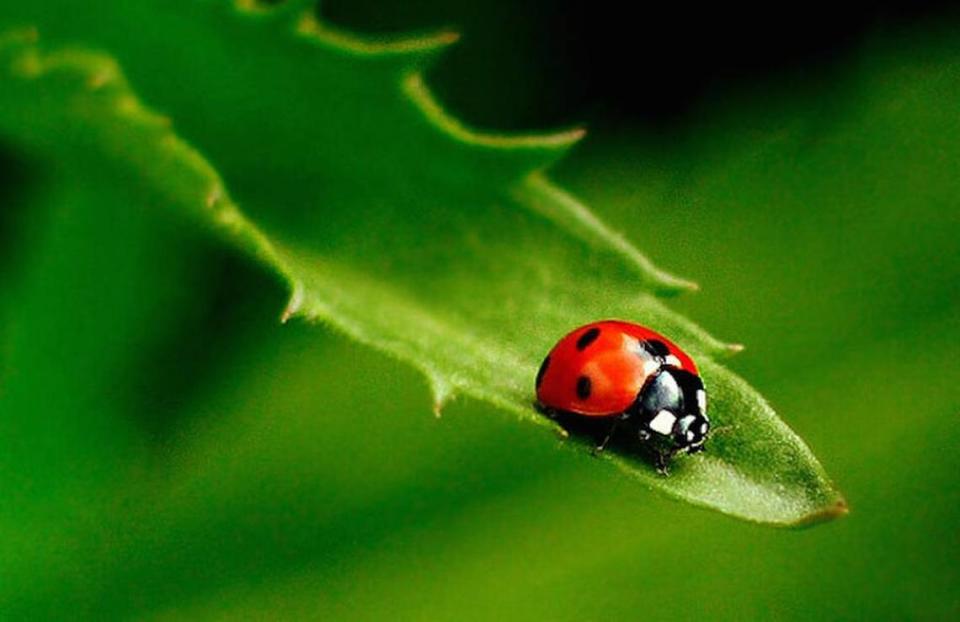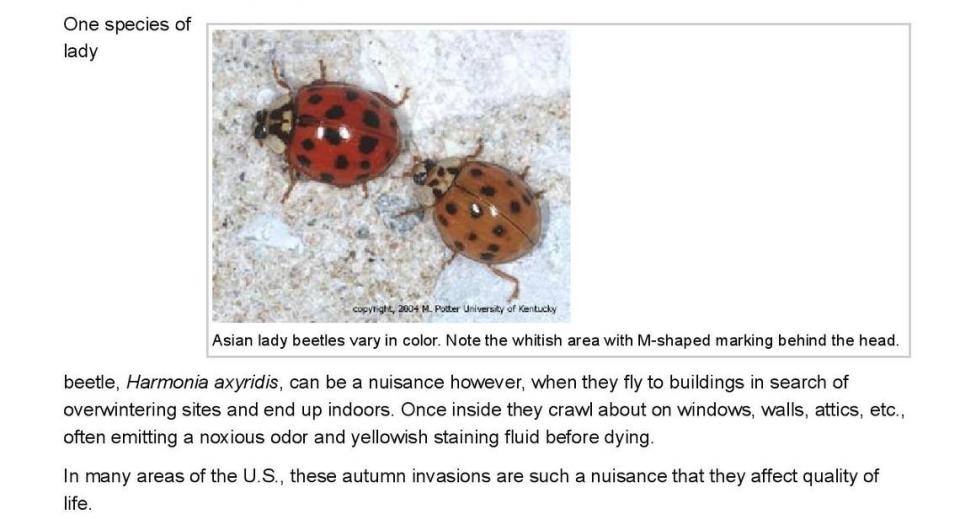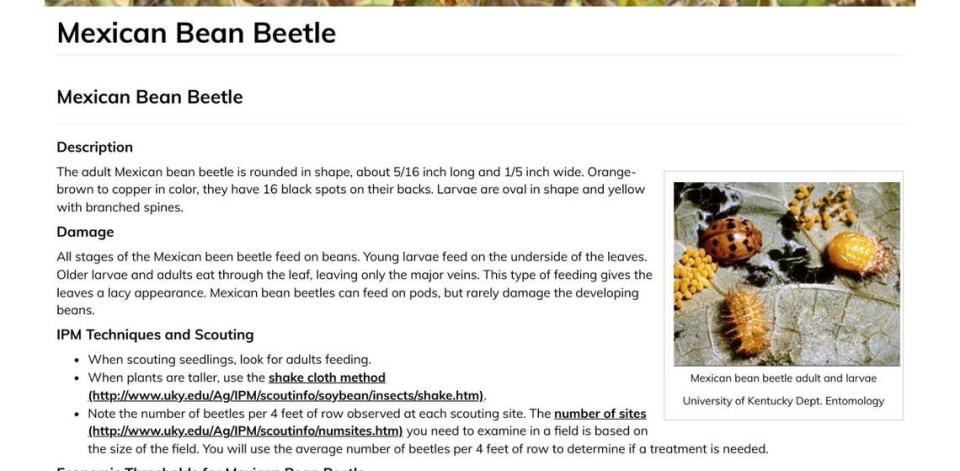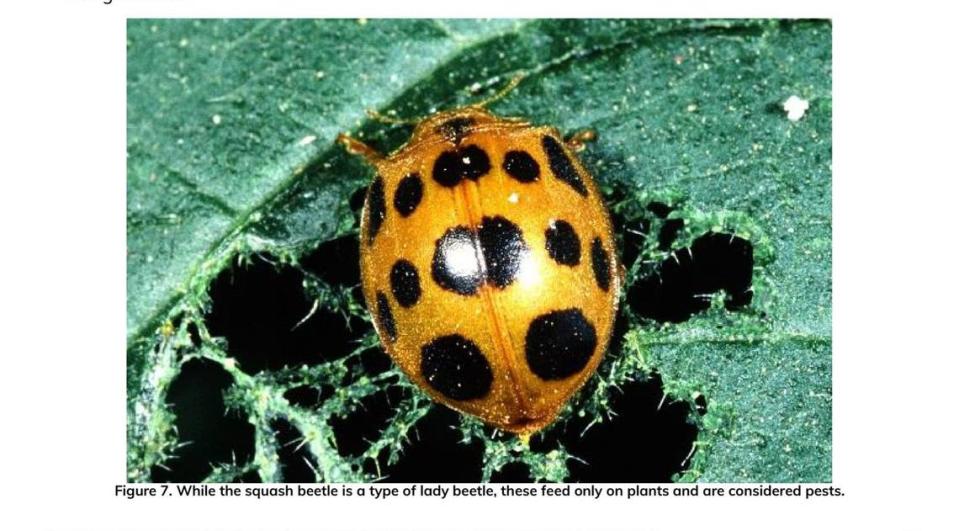Ladybugs invading your Kentucky home? They could actually be these destructive lookalikes
If you’ve seen a large number of ladybug-looking insects in your Kentucky home, they’re probably not ordinary ladybugs.
Jim Fredericks, National Pest Management Association senior vice president of public affairs and board-certified entomologist, recently told the Herald-Leader there are a handful of species commonly misidentified as ladybugs, but some are more of a nuisance than others.
“Ladybugs are actually a relatively large family of beetles. There’s actually about 250 or so different species in the U.S.,” Fredericks said.
The hundreds of ladybug species come in different shapes and sizes, though the traditional ladybug many people think of is a round, red beetle with black spots. While many are beneficial, some species can cause significant damage to plants, while others can encourage infestations of other insects to come into your home.
Here’s what to know about identifying ladybugs from similar species, and how to keep all types of pests out of your Kentucky home.
Ladybugs

Regular ladybugs, also known by the scientific name Coccinella septempunctata, feed on aphids, mites and scale insects, according to the National Park Service.
“In general, ladybugs don’t cause harm. In fact, they’re beneficial, and most feed on garden pests like aphids and scale insects, and so they actually should be encouraged,” Fredericks said.
It is unlikely you would find a pile of these ladybugs inside your home, however, Fredericks added. It would be more typical to find them outside in meadows, fields, forests and around garden plants.
Asian multicolored lady beetles

You can be almost certain if you see a large number of ladybugs in your home, they’re Asian multicolored lady beetles, according to Fredericks. While this species doesn’t feed on humans like ticks or mosquitoes for example, it can become a nuisance.
“If you have a ladybug problem, you also will have a carpet beetle problem because they’re feeding on the dead ladybugs that are hidden inside the walls,” Fredericks said.
Asian lady beetles, or Harmonia axyridis Pallas, often emit a “noxious odor and yellowish staining fluid before dying,” according to the University of Kentucky. They can also cause allergies and worsen asthma symptoms in some individuals, UK reports.
To get rid of large populations of Asian lady beetles, Fredericks recommends vacuuming them up and to consider contacting a licensed pest control professional for infestations.
Mexican bean beetles

The Mexican bean beetle, or Epilachna varivestis Mulsant, unsurprisingly hails from Mexico, but it’s also found in much of the U.S., according to researchers with the University of Florida.
This beetle is often found outside and in gardens, Fredericks said, and is usually a light orange color with black spots. They can significantly damage bean plants, especially their leaves.
To protect your crops from Mexican bean beetles, experts with the University of Maryland suggest covering your rows of beans and leaving the cover on until harvest time. You should crush egg clusters, larvae and adult Mexican bean beetles by hand, according to the university, and severe infestations may call for insecticides such as neem, spinosad or pyrethrum.
Squash lady beetles

The squash lady beetle, Epilachna borealis Fabricius, looks quite similar to the Mexican bean beetle, but it’s about three times larger than that species as well as ordinary ladybugs, according to the University of Maine.
Along with squash, the beetle is known to feed on melons, pumpkins and cucumbers, according to Fredericks.
You can curb a squash beetle infestation by picking them off your plants by hand, according to Forbes. You can also try to attract helpful flies and choose mulch types less hospitable to the beetles.
How to keep ladybugs out of your home & other pest control tips
Most pest prevention tips apply to all species. One of the most important things you can do is to look for any cracks or crevices where pests could enter, Fredericks said.
You may want to take a closer look at the seals around your windows and doors, as they can wear out and let bugs through. When sealing up cracks, the entomologist recommends people use exterior caulk.
As the colder months approach, ant season will taper, but rodents will start seeking shelter.
Fruit flies driving you bananas? Here’s how to get rid of them from your Kentucky home
“A mouse can enter a home through a hole the size of a dime, or through a gap, say under a door that’s a quarter-inch tall,” Fredericks said.
It’s also helpful to make sure all food is stored in airtight containers, including human food, pet food and wild bird seed. These all make good meals for mice, so sealing them properly will make your home less hospitable to rodents.
Another pest to look out for is termites. The species causes more than $5 billion in property damage each year in the U.S., according to the National Pest Management Association. While termites may be on people’s minds more in the warmer months, they are still active in the fall, Fredericks said, so it’s a good idea to consider scheduling a yearly termite inspection to help prevent damage.
This story was reported based on questions from our reader engagement project, Know Your Kentucky, run by our service journalism team. If you have a topic you’d like us to explore, fill out our form or email ask@herald-leader.com.

